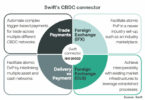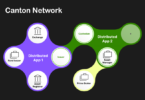Today standards body GS1 US announced the completion of the first phase of a Proof of Concept (PoC) to exchange food traceability data. The test involved platforms from FoodLogiQ, IBM Food Trust, ripe.io and SAP, and the solutions used blockchain, cloud as well as other technologies. All four organizations have blockchain traceability solutions, although both FoodLogiQ and SAP have historically used other technologies.
The test involved simulating the use of GS1 standards for a seafood supply chain to enable faster and more efficient food recalls. The project involved using GS1 for unique identification as well as EPCIS for the data model.
EPCIS is a standard around events to enable different solutions to share data, such as whether a product has been packed, shipped or received. Given most solutions already use GS1 for identification, EPCIS was the emphasis.
A spokesperson for GS1 US clarified this: “The proof of concept demonstrated two processes: 1) Four traceability solutions were able to create and share standards based physical event data. 2) Each solution was also able to consume the shared data to construct a trace for a product. Three solutions leveraged a distributed ledger and one utilized cloud based storage for the data.”
“GS1 US is passionate about leading industry toward interoperable solutions,” said Melanie Nuce, SVP , corporate development, GS1 US.
“These four solution providers have joined together with GS1 US to help solve the challenge of systems interoperability because they recognize the value of GS1 Standards as a foundation for emerging technologies like blockchain and understand the tremendous benefit of that consistency to the end user.”
This is the first of a multi phase test. The next step will involve getting industry participants such as suppliers, distributors, retailers and food service companies to implement EPCIS.
GS1 said that it wants to determine whether there is a “new technical standard or protocol required for interoperability to enable permissioning, privacy and access controls.” Interoperability can mean many things, including integrating data from a company’s systems with a blockchain system, or between two or more blockchains.
In terms of integrating data from one blockchain protocol with another, Hyperledger Cactus is aiming to provide a solution.
GS1 US clarified to Ledger Insights: “This effort is focused on industry defining WHO can see WHAT data from WHOM and WHEN for a specific use case and standard implementation of those requirements across each traceability system, whether those systems contain a blockchain component or not.”
“Even ledger-to-ledger integration projects, such as the recently launched Hyperledger Cactus, will still require developers to write plug-ins or APIs to move information from one ledger to another. GS1’s Electronic Product Code Information Services (EPCIS) standard is publicly available and royalty free, and provides a data model, a structure and a protocol for the exchange of data between disparate systems, both blockchain and non-ledger based.”
Ultimately GS1’s aim is to ensure consistency between the different solutions. To that end, three months ago, GS1 US published a guideline on using GS1 standards for blockchain supply chain applications.







